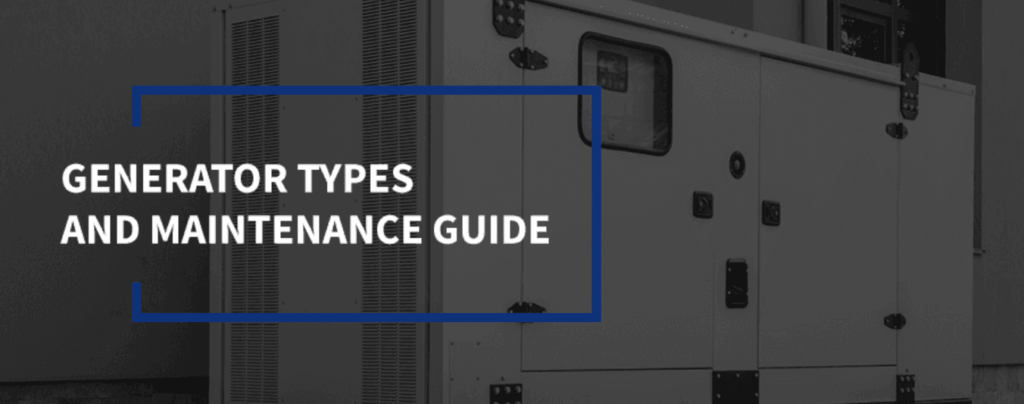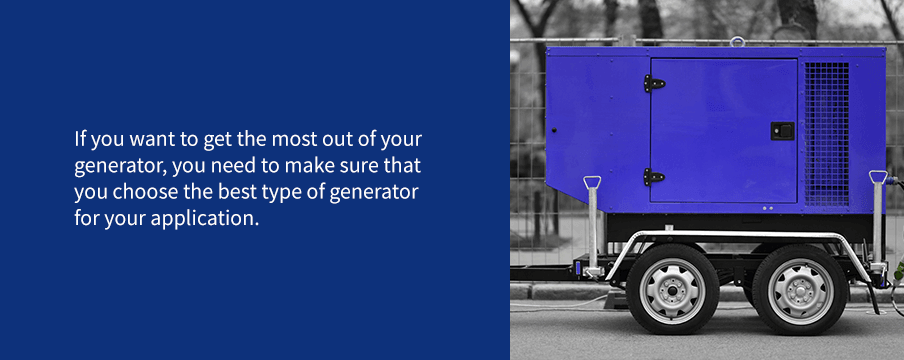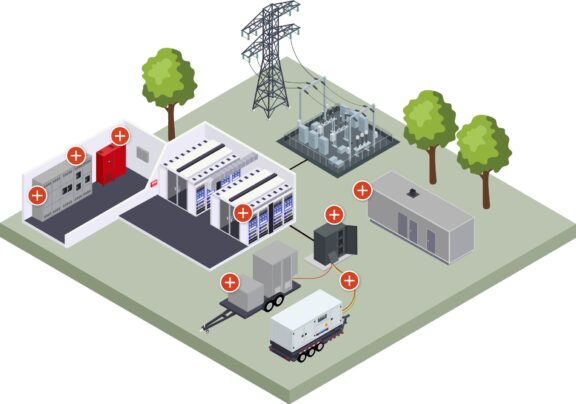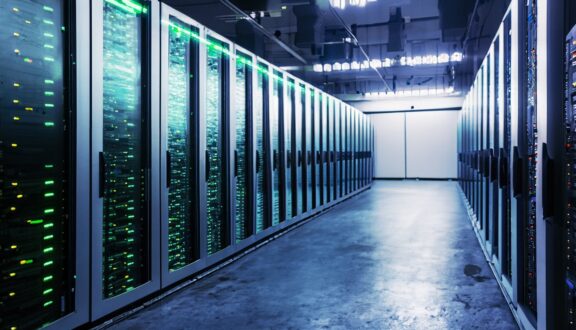
When power from the local grid isn’t available, generators step in. What does a generator do? Most generators use a fuel supply, such as diesel, gasoline or natural gas, to provide electrical energy. They provide backup power in case of blackouts and can serve as a power source in areas where electric service isn’t available. You can use them to power everything from single devices to the electrical systems of entire buildings.
There are various types of generators, and each one is best suited to specific applications. To get the most out of your generator, it’s important that you choose the right type for your application and maintain it properly. This guide will tell you what you need to know.
What Are the Different Types of Generators?
In this article, we’ll look at standby generators and portable generators as well as solar generators and ones that use different types of fuels. The following common types of generators have similar maintenance needs, but there are several differences between them that make them best suited for different applications.
Standby Generators
Standby generators are stationary generators that are permanently installed. Most have an automatic transfer switch that enables them to turn on automatically any time the main power source is lost and turn back off when the power sources come back online.
They constantly monitor for power loss and engage quickly if a power interruption occurs so that the time without power is very brief. They are typically more powerful than portable generators and often run on liquid propane or natural gas — typically, this will be the fuel type already being used in the facility.
Because they are so powerful, standby generators are typically used to provide emergency power to vital systems like elevators, walk-in refrigerators, standby lighting and life support equipment.
Portable Generator
Portable generators are often smaller generators that are easy to transport from place to place. They generate electricity through combustion reactions, enabling them to power various smaller systems such as televisions, freezers, tools and lights.
If power loss occurs, portable generators are typically connected to a subpanel or individual device to provide temporary power. They typically offer less power than standby generators but have the advantages of portability and lower costs. They’re often powered by diesel but can also use gasoline, propane or natural gas.
Solar Generators
Unlike most generators, solar generators rely on sunlight to produce power. Solar power is a clean, renewable source of energy that will reduce your environmental footprint. Since solar generators don’t burn fossil fuels, they do not produce the emissions that make other generator types hazardous for indoor use. They also cost less over time since you will not be purchasing fuel for them.
A basic solar generator consists of several parts:
- Rechargeable battery
- Inverter
- Solar panel
- Solar charger
Some models also come with additional solar panels you can manipulate for better light absorption. Others will combine battery power with the absorbed sunlight to improve output and reliability. You can add more solar panels if needed for more power.
Typically, solar generators have a lower power output than other generator types because they are dependent on the sun for power. However, because they lack complex internal mechanisms, they require less maintenance than standby or portable generators.
Generators by Fuel Type
- You can also categorize generator types by the fuel they use. The fuels most frequently used for generators include:Gasoline: Gasoline is one of the most common generator fuels. Some advantages of gasoline-powered generators are their relatively low cost and the fact that gasoline is so readily available. Gas-powered generators also come in small sizes. Gasoline, however, typically costs more than other fuels and has higher emissions. Additionally, it requires electricity to pump gas, and gas does not last long in storage, which can be an issue in the event of a long-lasting power outage.
- Diesel: Diesel generators are typically more heavy-duty than gasoline-powered generators. Because of this feature, they typically last longer but are more expensive. Diesel fuel is relatively affordable. While diesel fuel lasts somewhat longer than gasoline, it also requires electricity to pump it, so you may run into similar issues during an outage. Diesel has relatively high emissions, but biodiesel offers a more environmentally friendly alternative.
- Propane: Propane lasts longer in storage than gasoline or diesel and releases fewer emissions when burned. You can also obtain it during power outages. A disadvantage is that propane fuel systems are more complex, which may lead to higher maintenance costs. Generators that use propane are also often more expensive than other types. Additionally, propane is also kept under pressure, which can be a hazard.
- Natural gas: Natural gas-powered generators are stationary units with gas lines that run directly to the unit. This setup means they have a continuous supply of fuel but are more expensive to install. Natural gas also burns relatively cleanly, and natural gas-powered units are fairly affordable.
How to Determine the Best Generator for Your Needs

If you want to get the most out of your generator, you need to make sure that you choose the best type of generator for your application. Here’s when to choose a standby, portable or solar generator.
When to Choose a Standby Generator
Standby generators are ideal for when you need more power, such as for a whole building or large piece of equipment. It’s also essential if you need your power to be near-continuous, even when electric service from the main grid is disrupted. While a standby generator comes with an upfront investment and regular maintenance needs, the cost is well worth it if you need backup power for critical applications. Common applications for standby generators include hospitals and medical equipment, factories in which downtime can be costly, standby lighting and elevator safety systems.
When to Choose a Portable Generator
A portable generator may be the right choice if you need to be able to transport your generator and don’t need your generator to turn on automatically. They’re also useful if you don’t need quite as much power from a single unit and want to power one or several relatively low-power pieces of equipment. They’re also ideal for sites that don’t have access to power from the grid, such as remote work sites or new construction projects.
It’s important to keep in mind, however, that portable generators produce noise and emissions like standby generators — if you must use a portable generator indoors, make sure the area is well ventilated.
When to Choose a Solar Generator
Because solar generators do not produce dangerous exhaust fumes, you can use them indoors risk-free, making them ideal for businesses with limited space. They’re also more low-maintenance thanks to their lack of internal moving parts, which can reduce long-term costs.
Because solar generators produce only a limited supply of energy, this model is best for operations that have low backup power needs. While ongoing costs are low, the high upfront costs of purchasing and setting up the generator is another factor businesses should seriously consider before investing in a solar generator.
It’s also important to consider the typical weather conditions in your area. Solar generators typically work best in tropical and sub-tropical climates due to the high amounts of reliable sunlight there. Those in rainy, less sunny climates may want to choose another generator type.
Other Factors to Consider
Some other factors to consider include the wattage you need, the type of fuel you want to use and a generator’s safety features.
- kW Capacity: kW refers to the amount of electricity that a generator can support. Add up the demand of all of the equipment you want your generator to be able to power and include additional kW for initial power surges and additional equipment.
- Fuel type: Consider the advantages and disadvantages of each fuel type and how readily available each one is in your area.
- Safety considerations: Make sure that the generator is designed for the environment you need to use it in and the application you need to use it for. Also, consider safety features, such as carbon monoxide detectors.
How to Conduct Generator Maintenance
The maintenance requirements for generators are similar across the various types. It’s essential to inspect your generators regularly and perform preventive maintenance work according to the schedule provided by the generator’s manufacturer.
Before you do anything else, make sure your generator’s surface is clean and free of dust, cobwebs or other debris. This step is especially important for solar generators, since too much dust buildup can block solar power absorption — to prevent issues with your solar generator, it’s best to dust the panels at least once a month with warm water and a cloth.
Beyond the surface, generator inspections should include checking for leaks, checking oil and coolant levels and assessing the condition of the belts, hoses and battery terminals and cables.
You also need to replace the oil, coolant and fuel at the intervals recommended by the manufacturer. For some types of generators, you may also need to filter or replace the fuel in your unit. Also, regularly replace the oil, fuel and air filters as well as the spark plugs. Keeping up with these maintenance tasks will help increase reliability.
If your generator has a battery, you will also need to check the status of your battery routinely by testing its electrolyte levels and specific gravity. You should also ensure your battery stays clean. If you notice corrosion building up on your battery’s contacts, you may be able to clean it yourself using a light solution. However, you may want to consult a professional if this method does not work.
Running your generator periodically between uses will help you keep your generator in good condition and help you spot issues earlier. Regularly testing your generator using a load bank will give you valuable information about its health and performance. This will help you ensure your generator can meet the required demand and help you keep your generator in optimal condition. Load bank testing also helps to burn off some of the fuel in the generator, which prevents wet stacking in diesel generators, a situation in which unburned fuel builds up in the exhaust system.
Test Your Generator With Help From Load Banks Direct
At LBD, we manufacture industry-leading load bank products at competitive prices. Our load banks enable you to test your generators to ensure reliability and adequate performance. We have a large portfolio of superior-quality load banks, including trailer-mounted, freestanding, portable, rooftop-mounted and duct-mounted models. Call us at (855) 523-2255 or request a quote today, and we’ll help you find the perfect load bank testing solution for your needs.

We Are Here
To Help
Our team is here to support you and solve your power challenges. Connect with our responsive experts today to learn about our customized power solutions and products.


